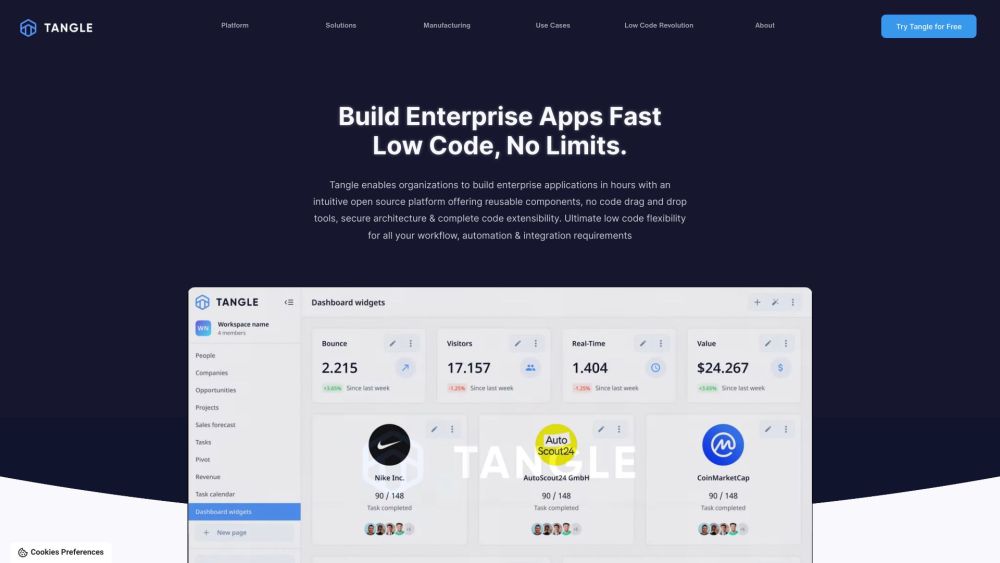Tangle: Low-Code, AI, Secure, Extensible Enterprise App Solution
Transform your enterprise with Tangle: AI-powered, low-code apps. Build secure, extensible solutions fast with reusable components and no-code tools.


What is Tangle?
Tangle is a revolutionary low-code platform designed for enterprise application development. It features reusable components, intuitive no-code tools, robust security architecture, AI-driven capabilities, and full code extensibility. Tangle enables organizations to swiftly create applications in just a few hours, catering to diverse business needs.
How to use Tangle?
Tangle's Core Features
Reusable components
No-code tools
Secure architecture
AI-powered features
Complete code extensibility
Tangle's Use Cases
Enterprise app development
Workflow automation
Integration requirements
Tangle Company
Tangle Company name: Tangle Software Inc.
For more information about Tangle, please visit the about us page.
Tangle LinkedIn
Tangle LinkedIn Link: https://www.linkedin.com/company/tanglesoftwareinc/
FAQ from Tangle
What is Tangle?
Tangle is a cutting-edge low-code platform for enterprise applications. It provides reusable components, no-code tools, secure architecture, AI-driven features, and complete code extensibility, allowing organizations to quickly develop apps tailored to their needs.
How to use Tangle?
Organizations can leverage Tangle's intuitive open-source platform, which offers reusable components and drag-and-drop tools to build enterprise applications. It also provides secure architecture and full code extensibility when necessary.
How can Tangle be used?
Tangle can be used to develop enterprise applications rapidly by utilizing its user-friendly open-source platform, which includes reusable components and drag-and-drop tools.
What are the core features of Tangle?
The core features of Tangle include reusable components, no-code tools, secure architecture, AI-powered features, and complete code extensibility.
What are some use cases for Tangle?
Some use cases for Tangle include enterprise app development, workflow automation, and integration requirements.